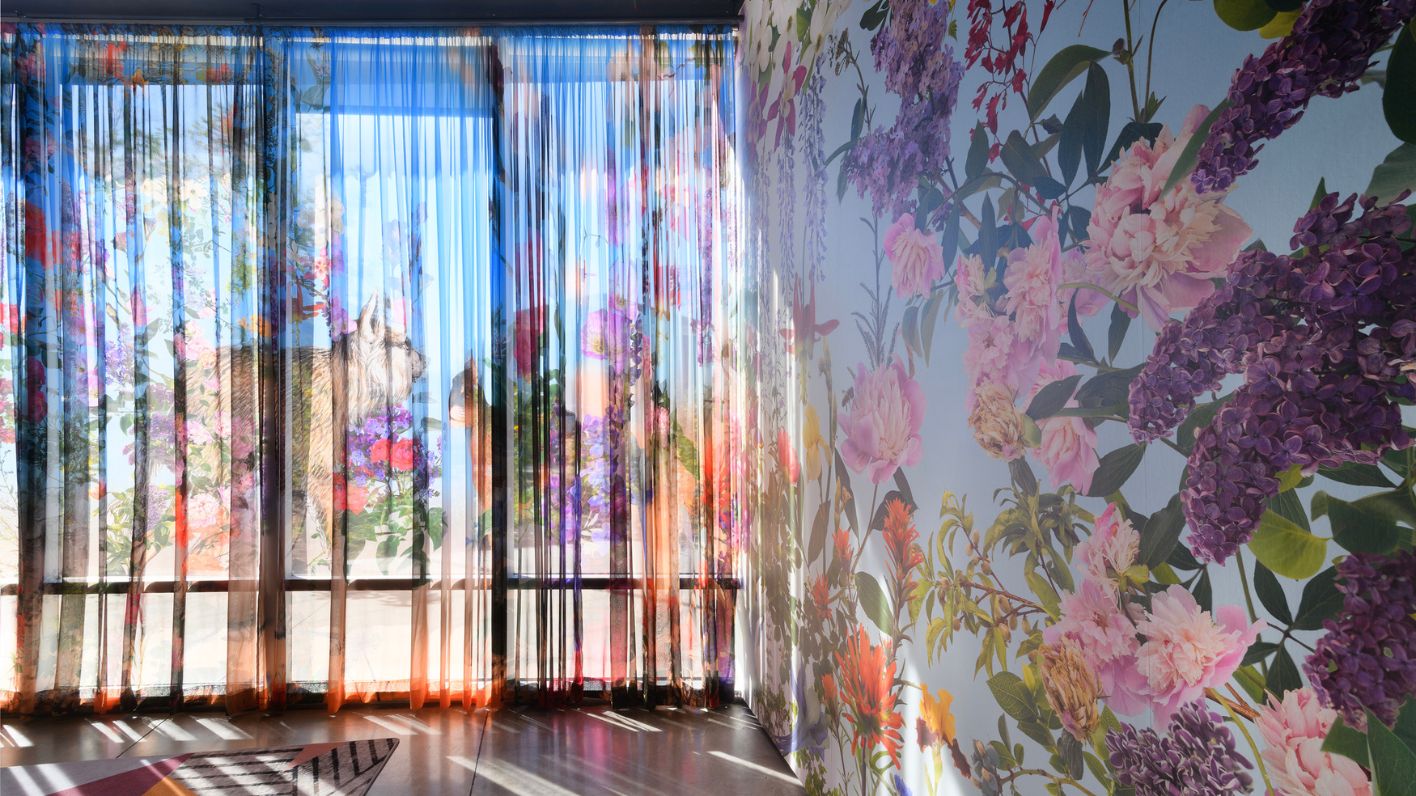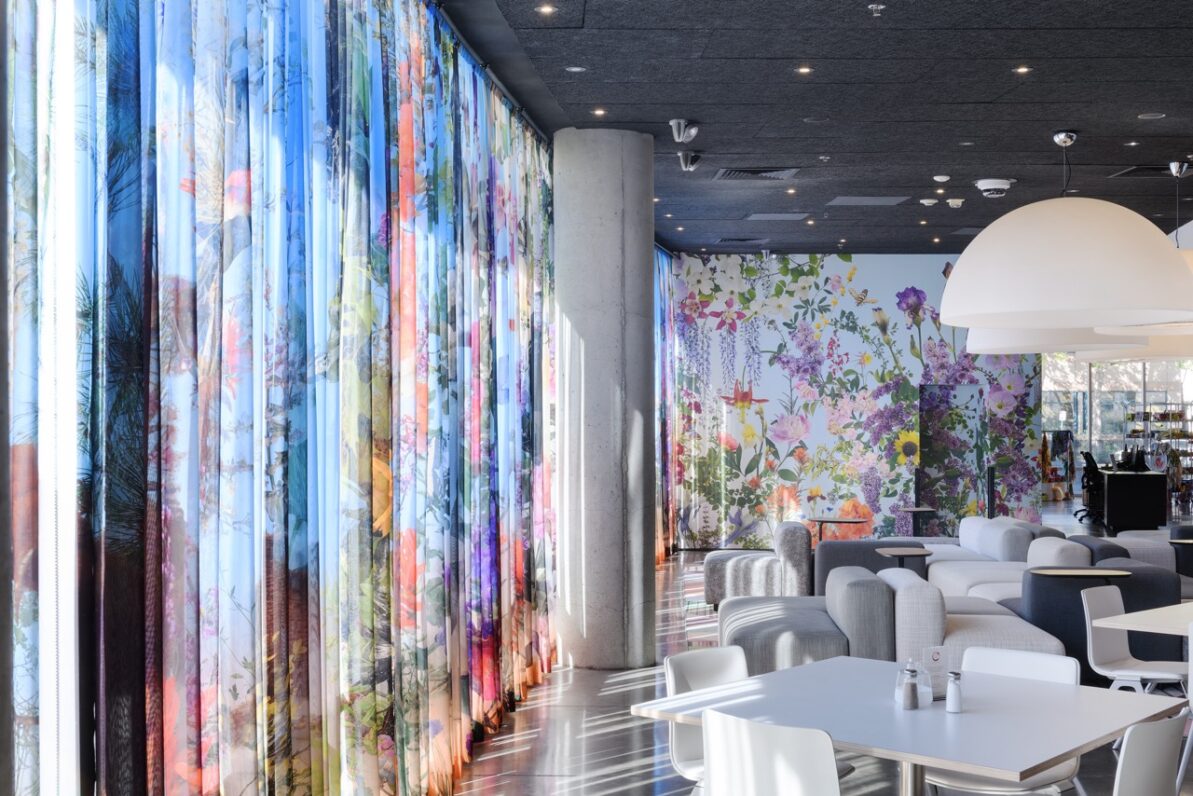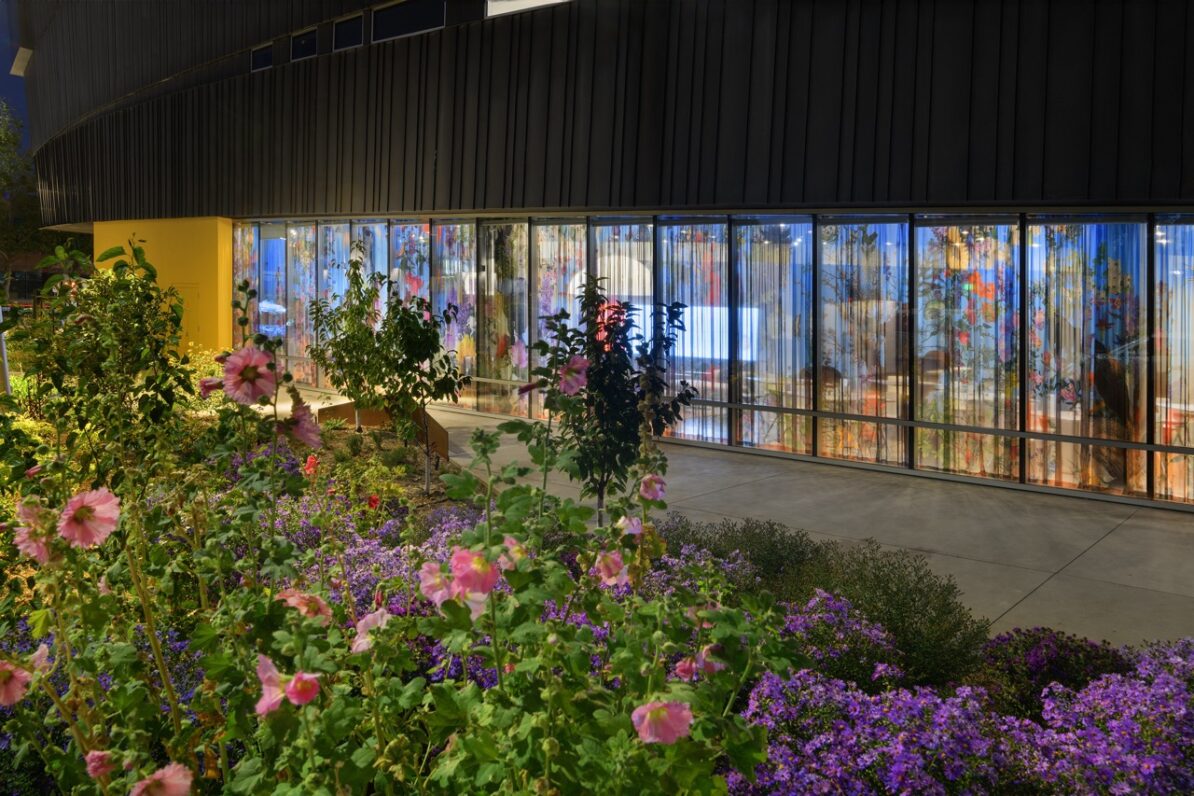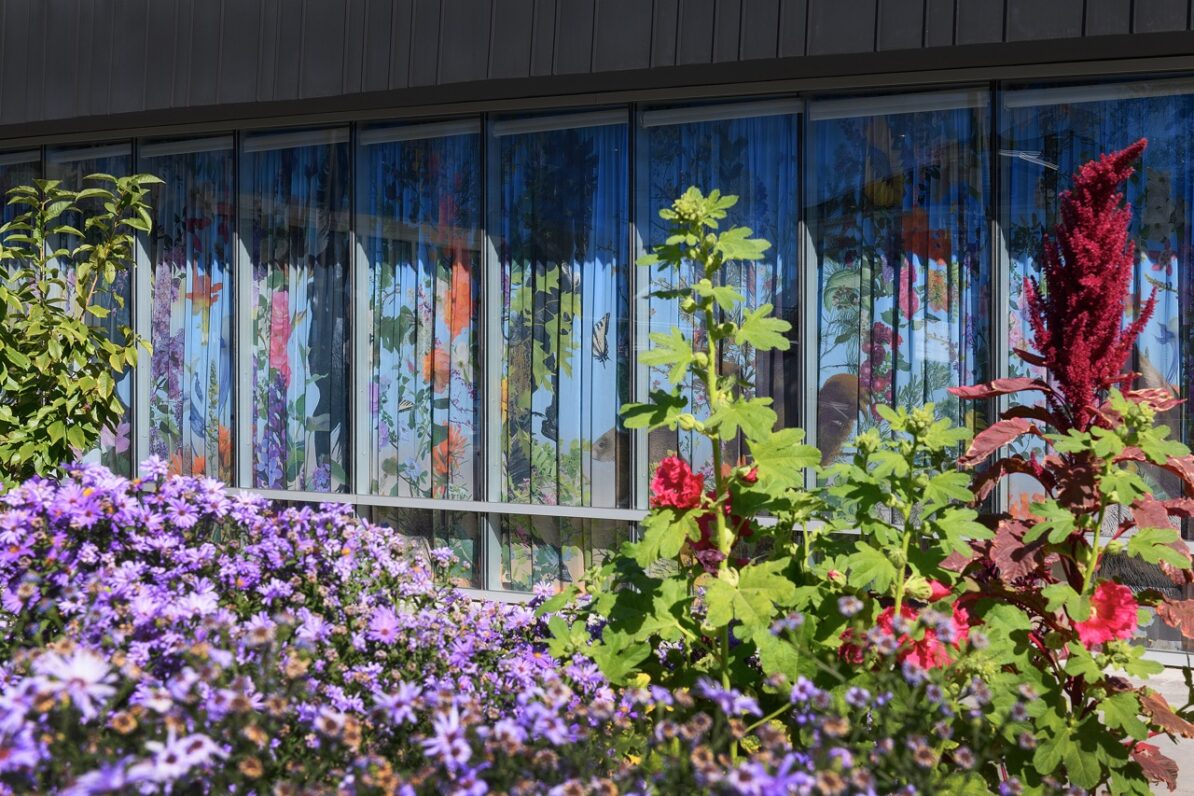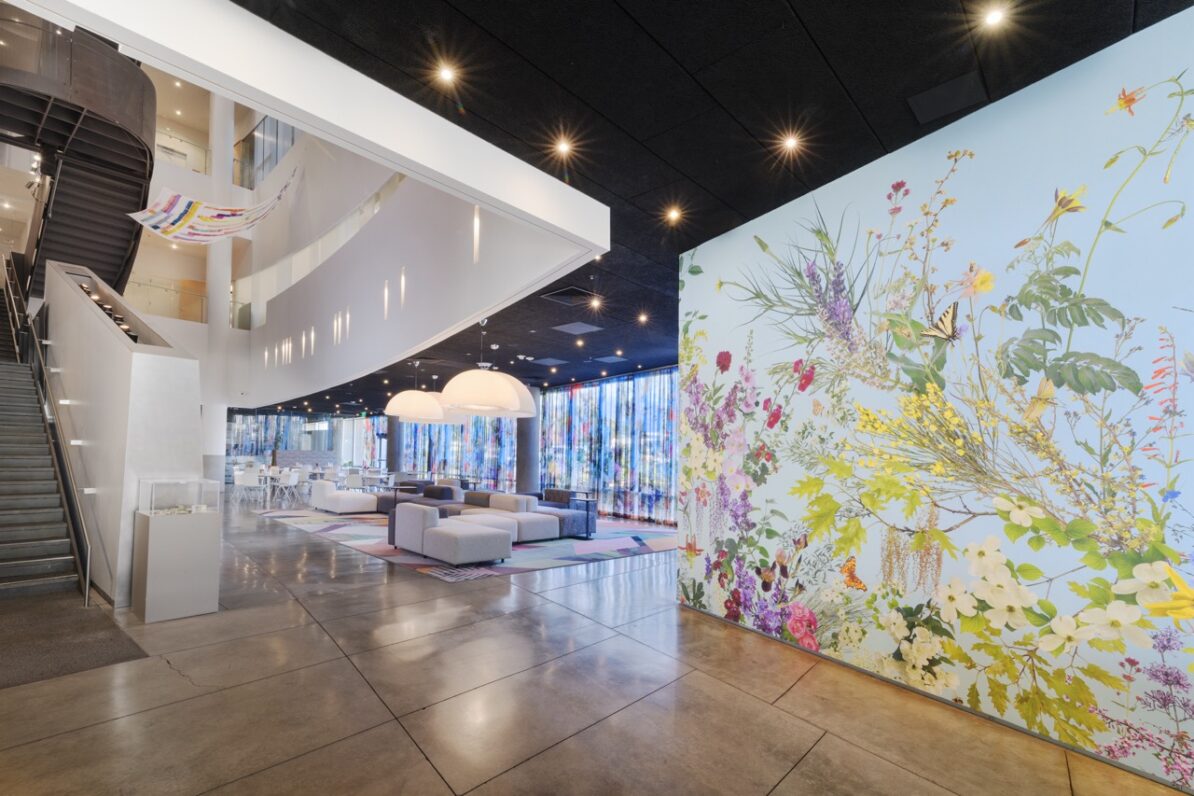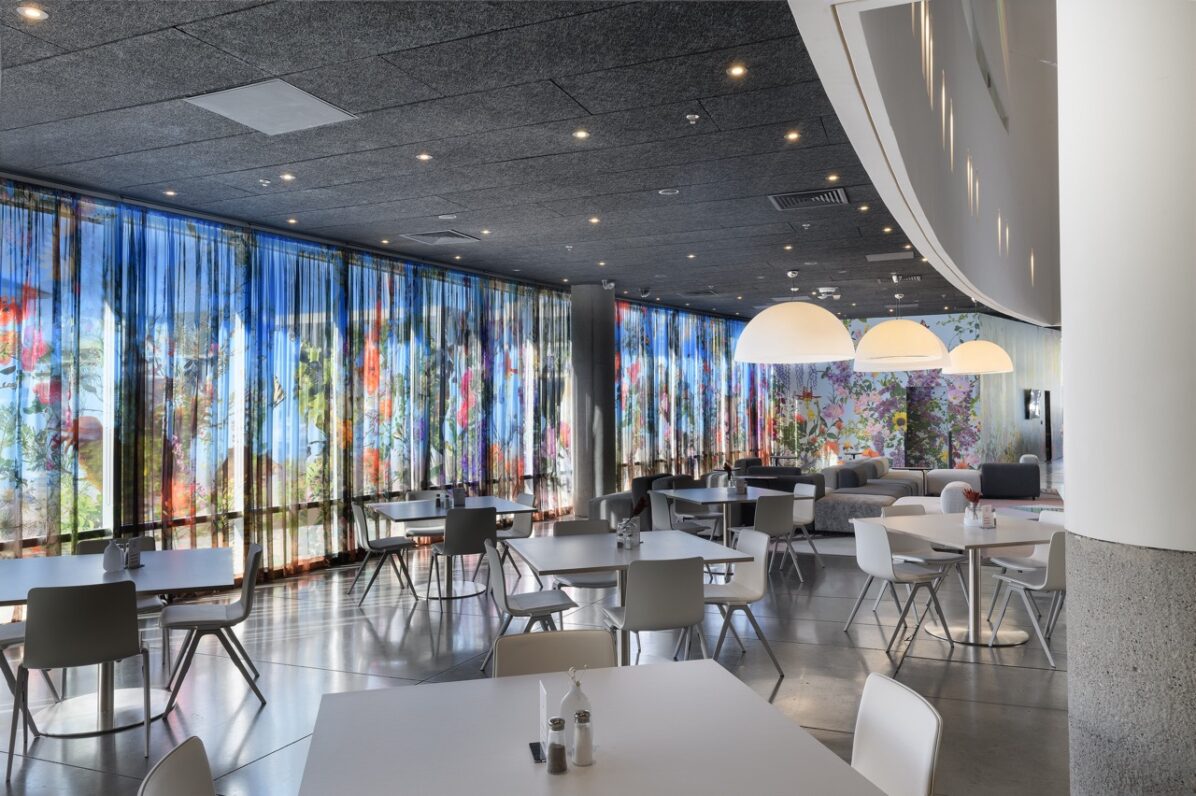Using fruit as a method of exploring the familiar, the artist duo Fallen Fruit investigates interstitial urban spaces, bodies of knowledge, and forms of civic participation and collaboration. They began by creating maps for what the artists called “public fruit,” or fruit trees growing on public property in Los Angeles. They have expanded their project into an ongoing exploration of the boundaries of public and private spaces while using fruit as both a material object and conceptual framework. Their projects take on many fruit-inspired forms, ranging from the public adoption of trees, the creation of public edible gardens, zines, performances, as well as large-scale immersive installations that examine the history of a given site or collection.
The collective unveils a new commission for the Museum’s Grand Hall, with an immersive installation that spans wallpaper and curtains. Using the flora and fauna specific to Reno, The Power of Pollinators (And Other Living Things) (2024) assumes larger than life proportions inside the Museum walls. The interior motifs are a continuation of the garden outside—fruit, berries, trees, flowers, and pollinators—that appear in Monument to Sharing, in the Linda and Alvaro Pascotto Sculpture Garden. Both works offer a unique public ‘welcome,’ and invite visitors to explore ideas of generosity, agricultural production, and the importance of cultivating community.
Fallen Fruit was originally conceived in 2004 by Matias Viegener, Burns and Young. Since 2013, Burns and Young have continued the collaborative work.
